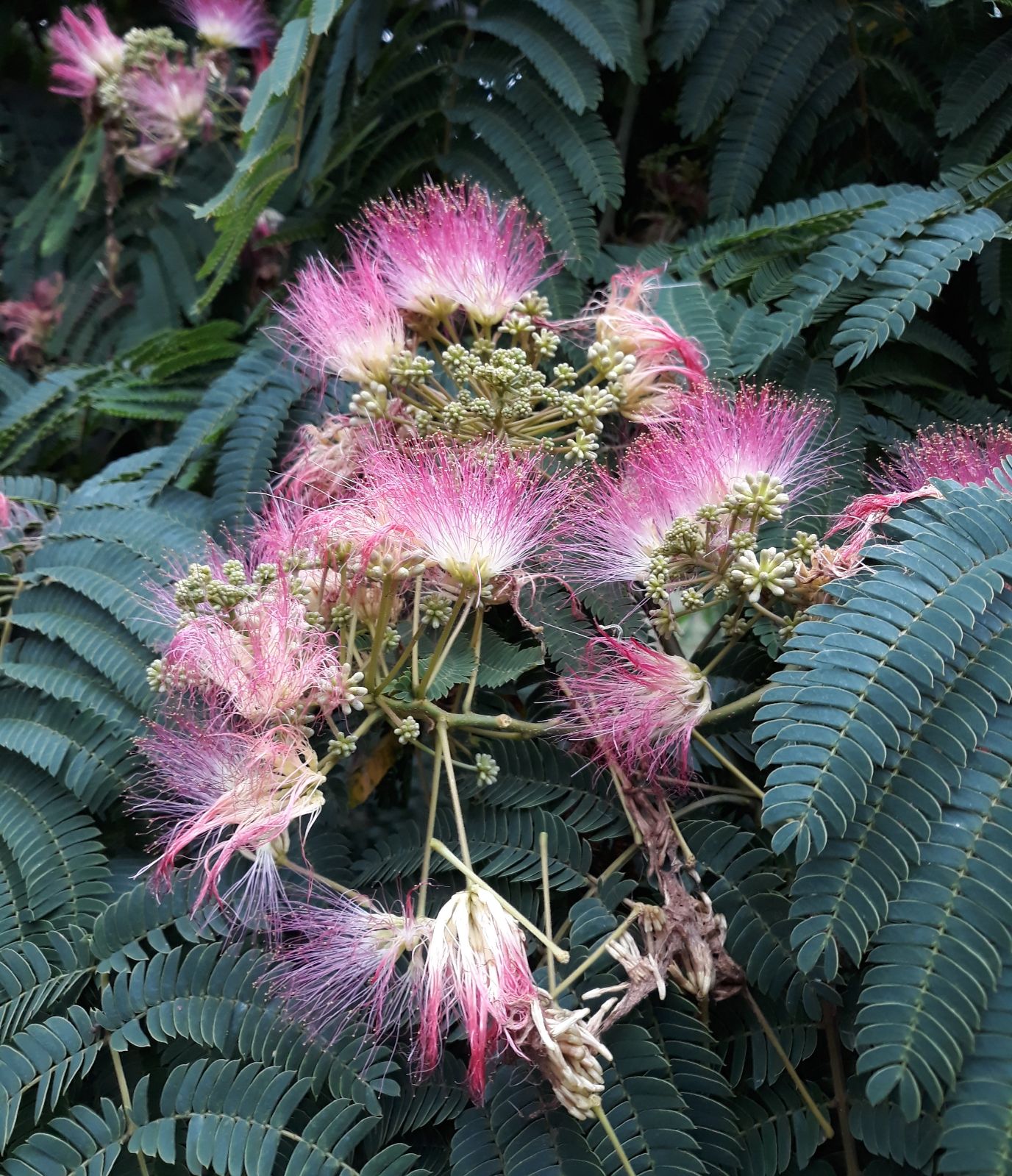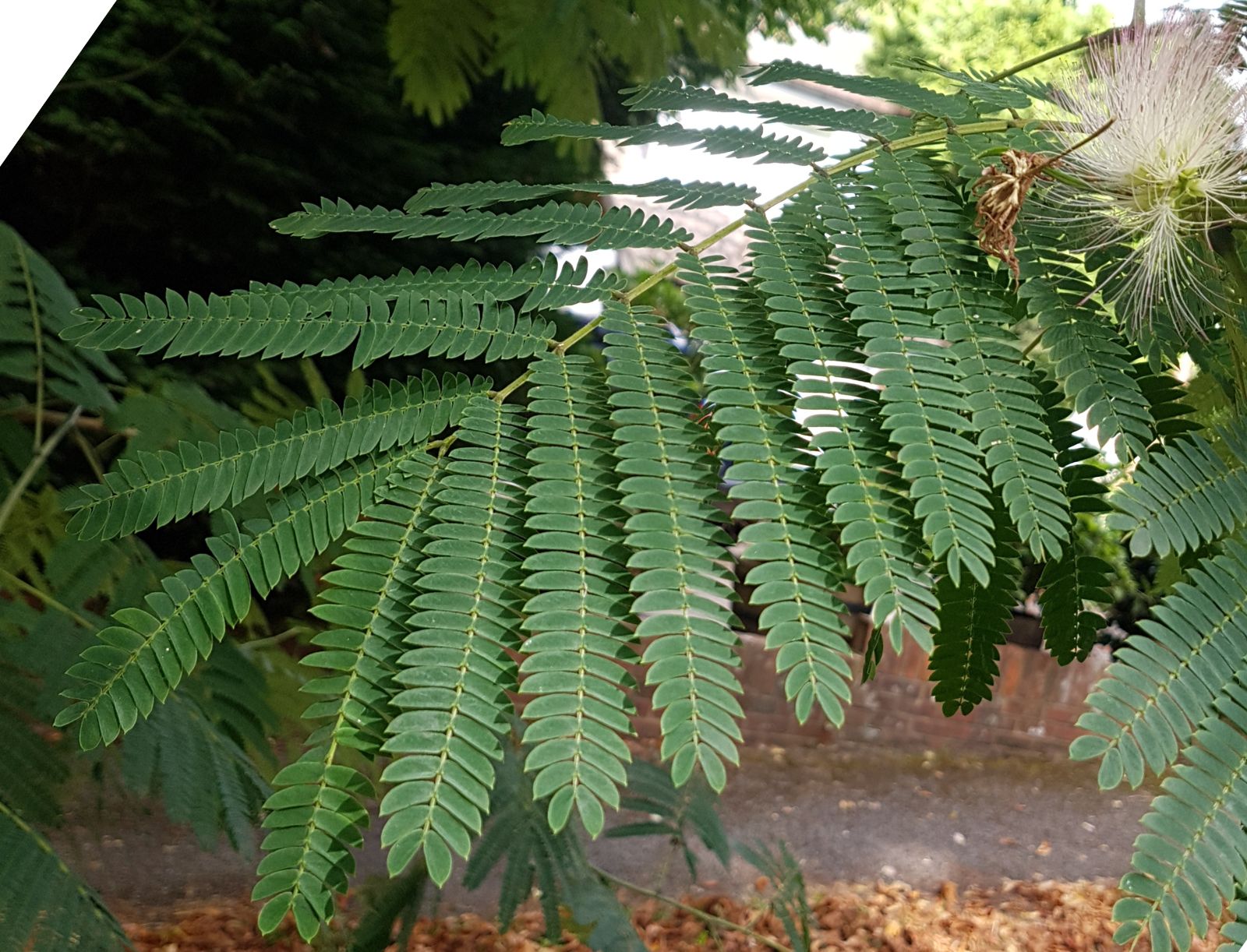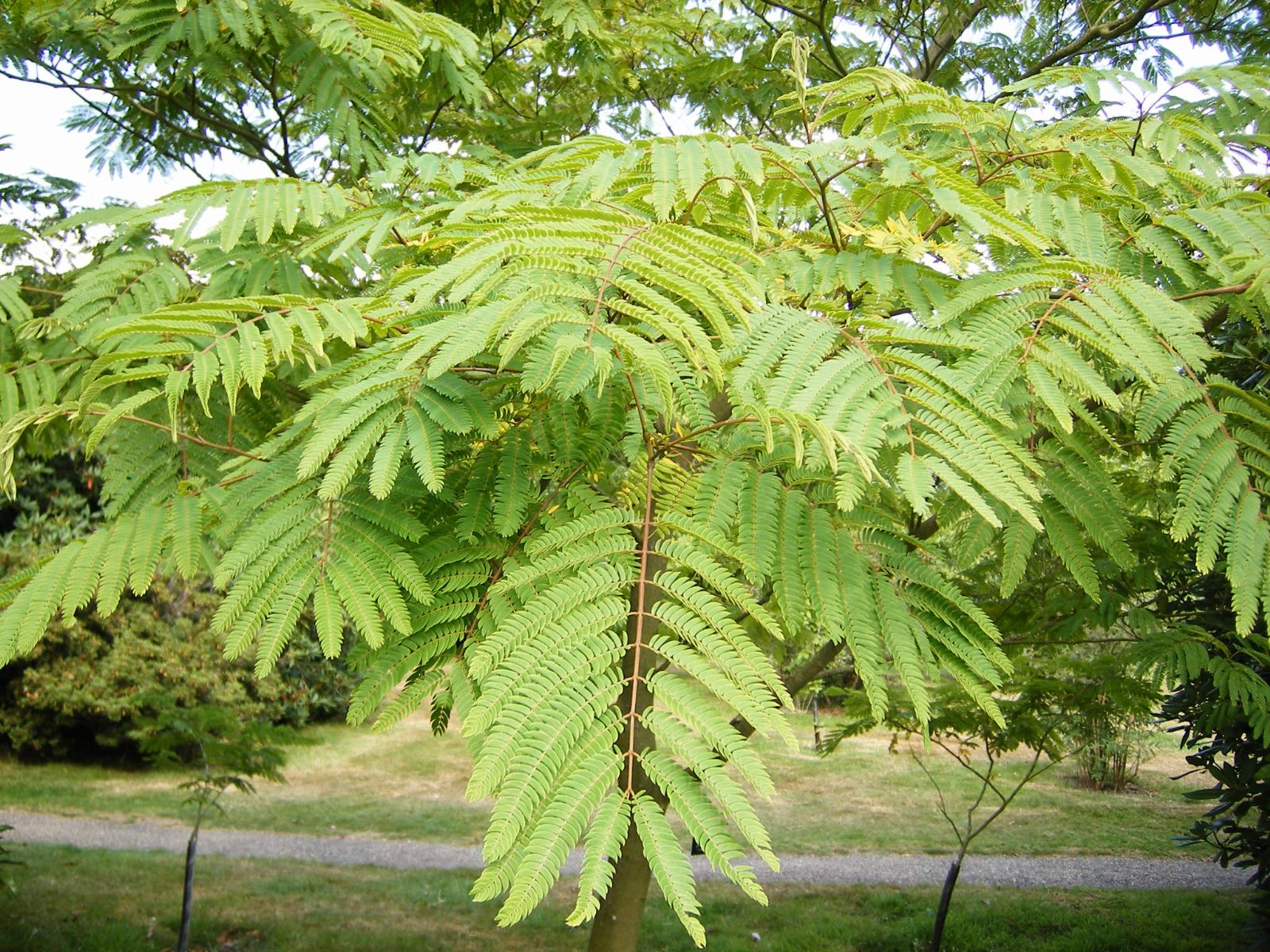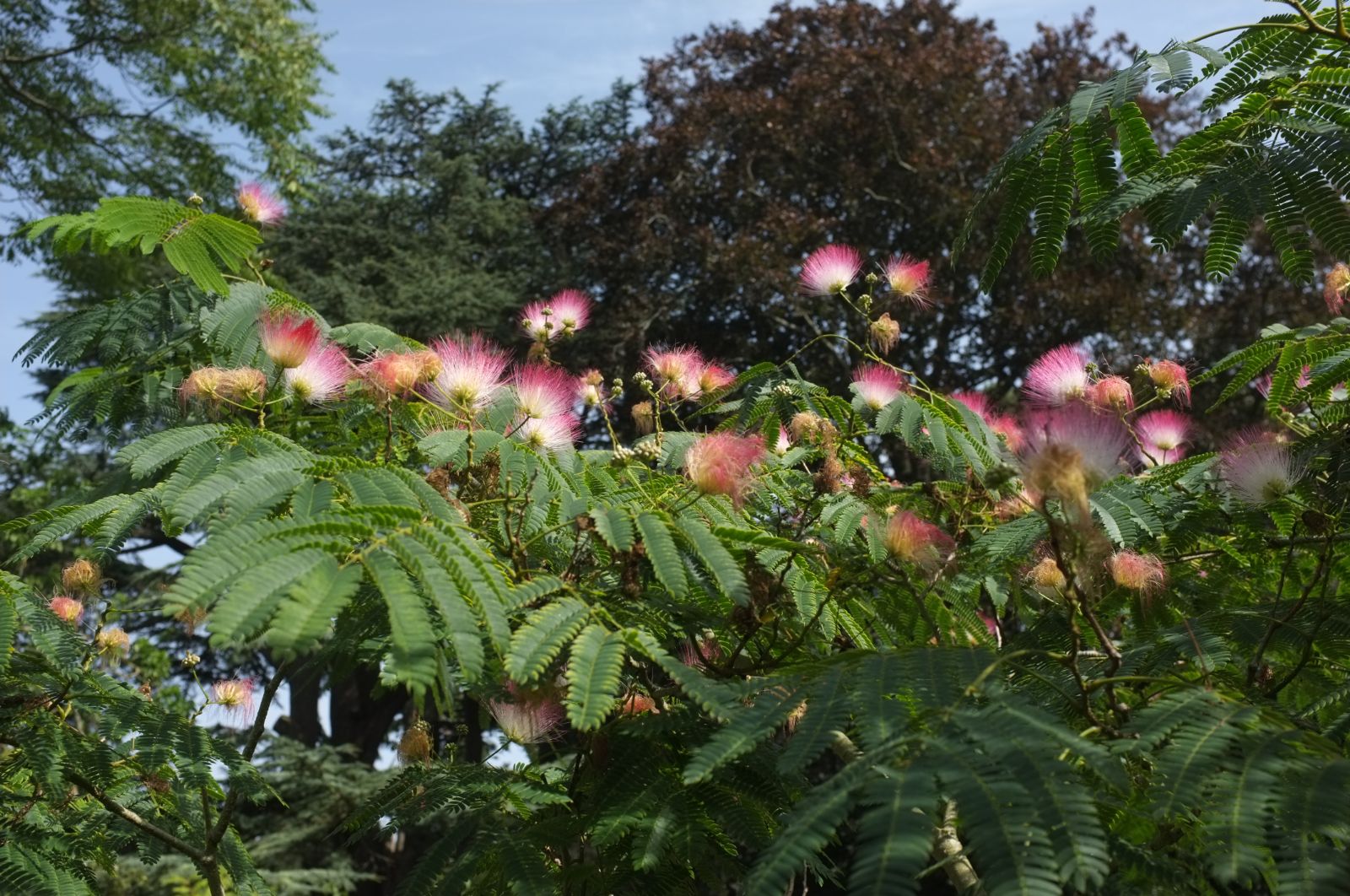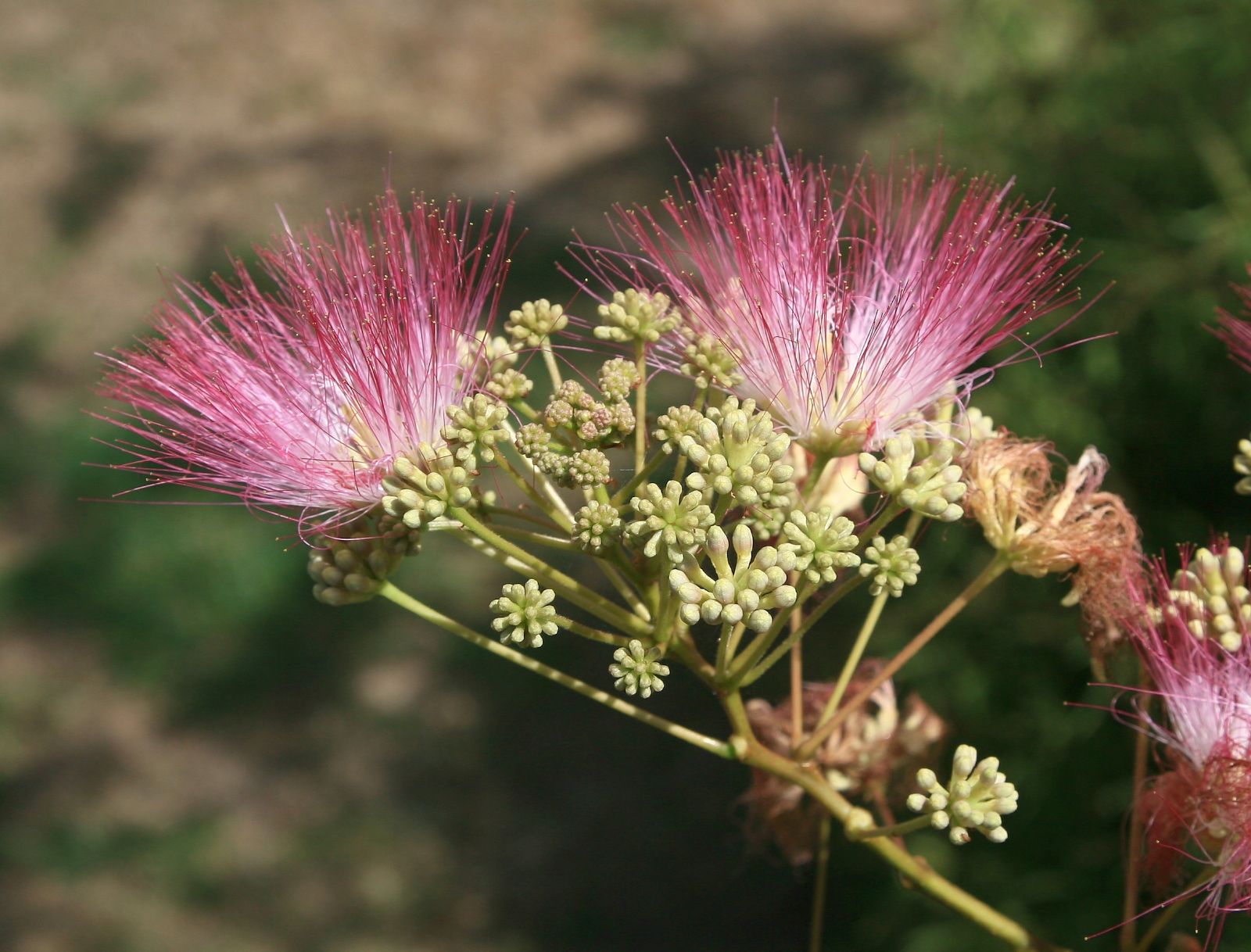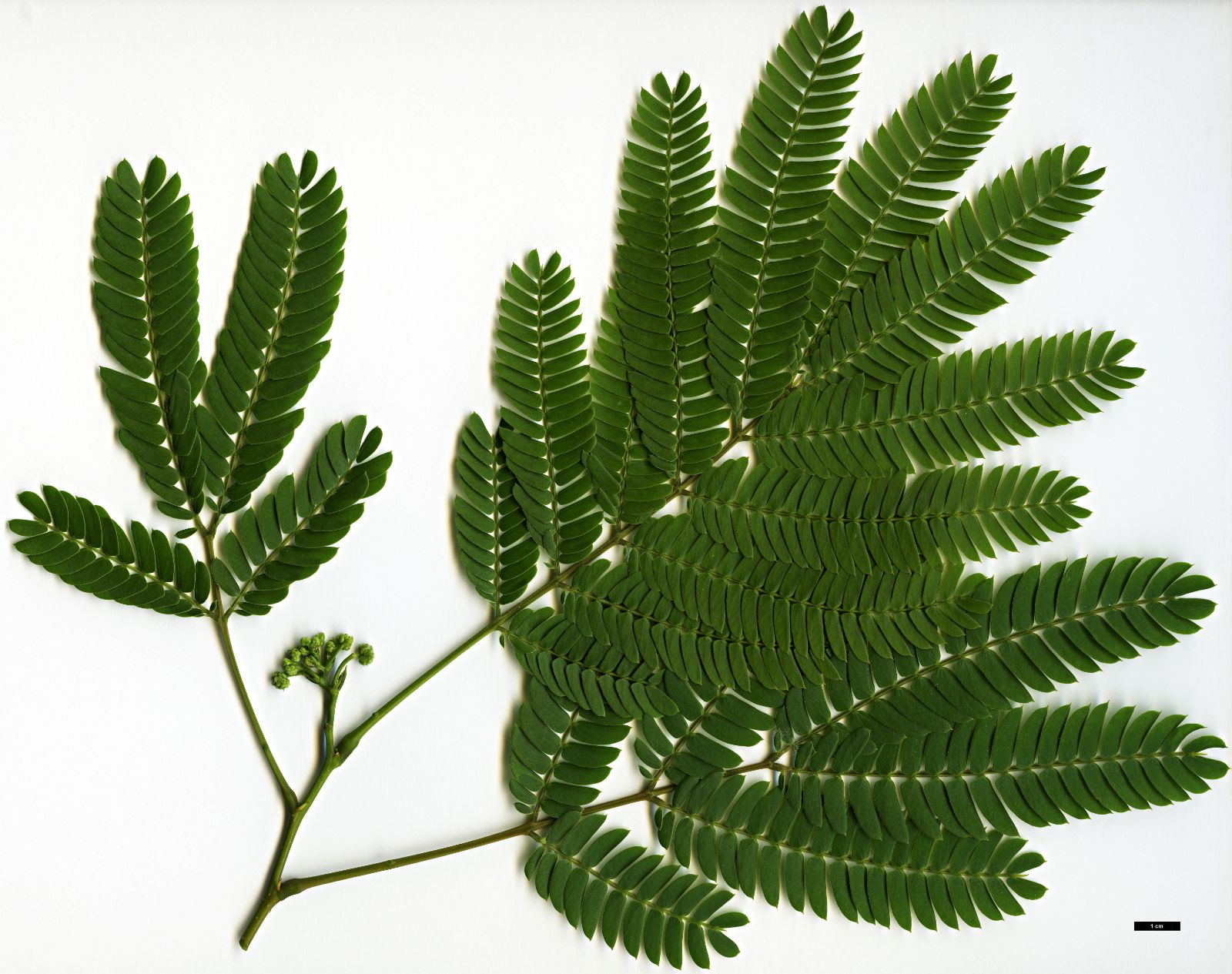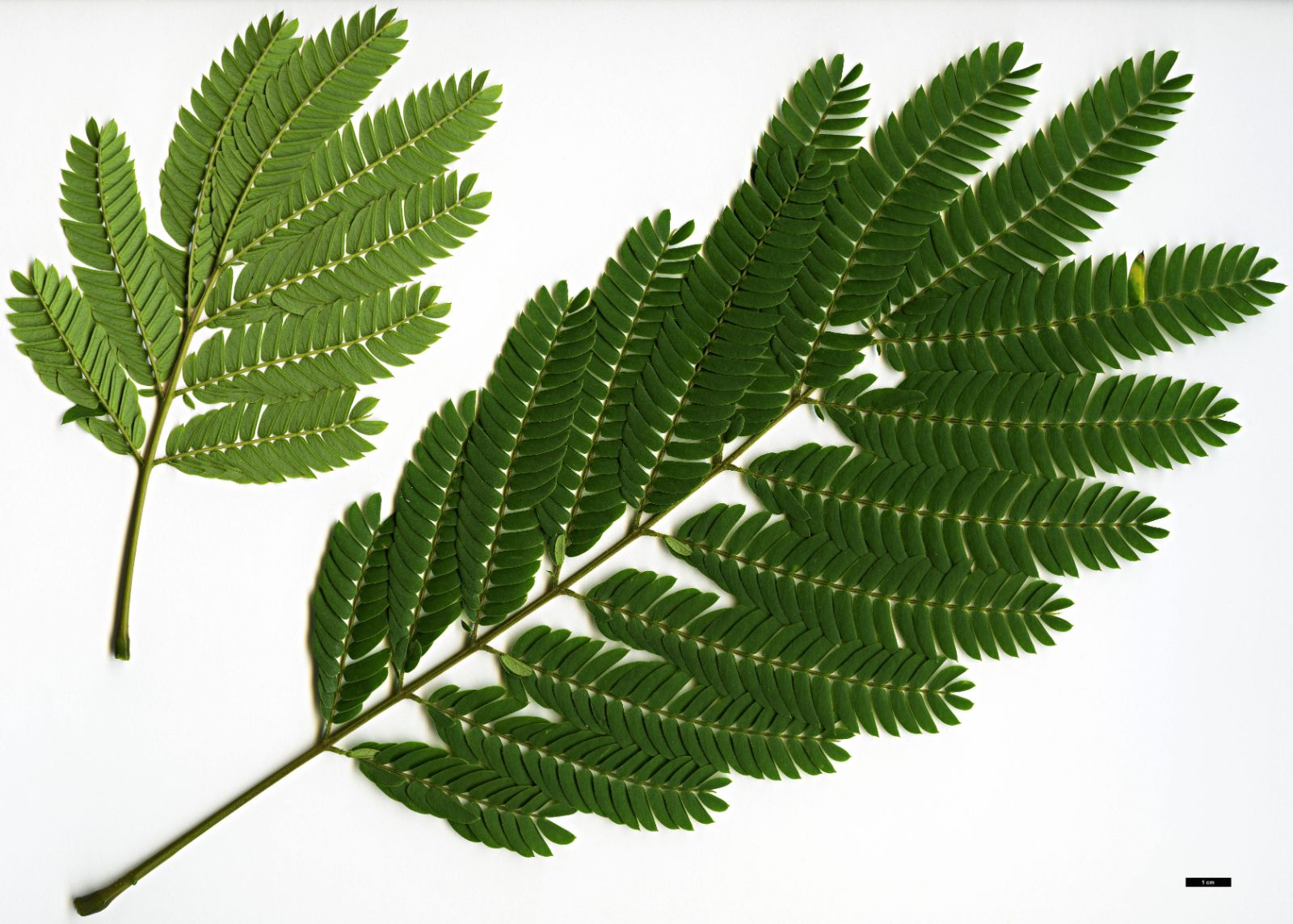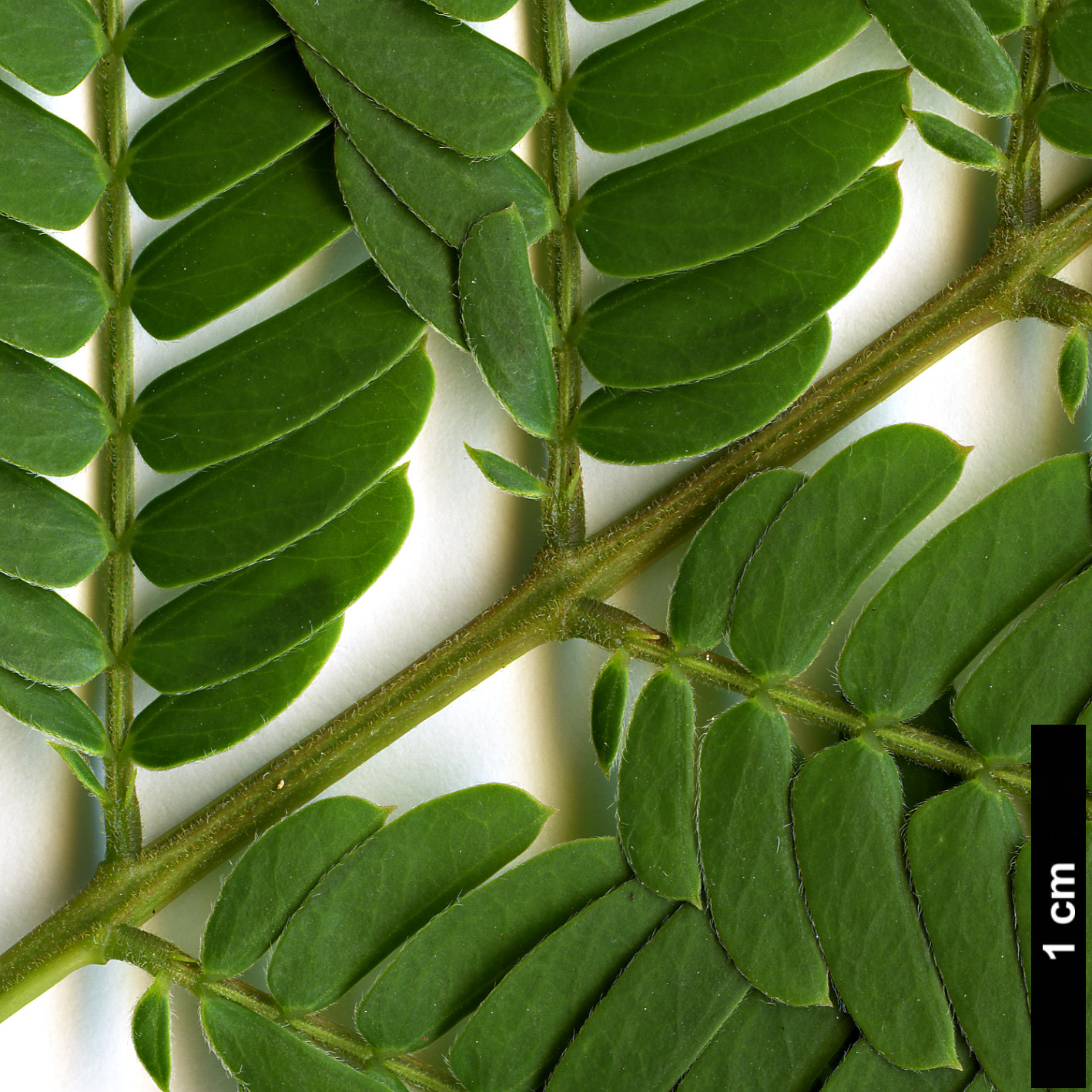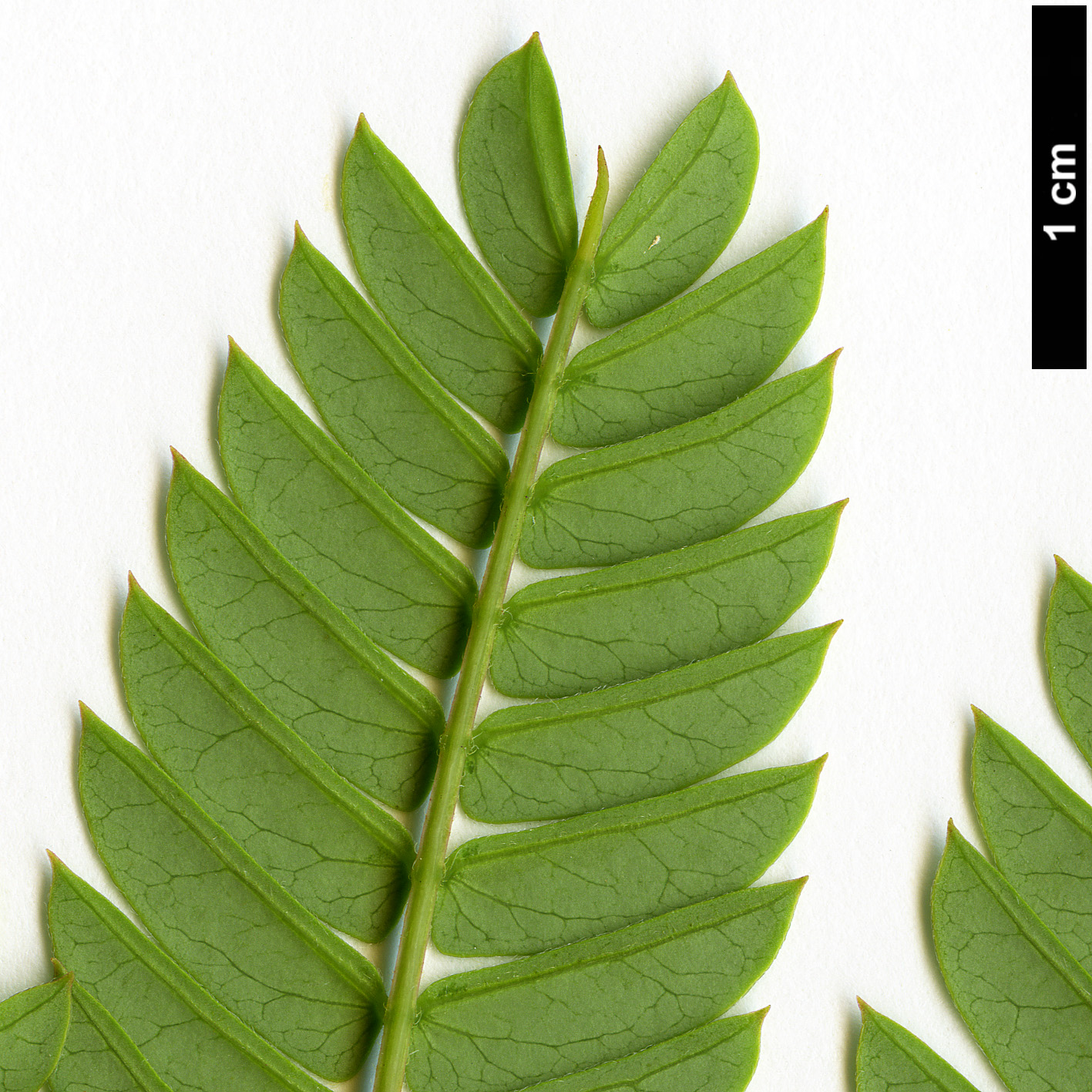Albizia julibrissin
Credits
Article from Bean's Trees and Shrubs Hardy in the British Isles
Recommended citation
'Albizia julibrissin' from the website Trees and Shrubs Online (treesandshrubsonline.
A deciduous tree 30 to 40 ft high, with angular glabrous branchlets. Leaves doubly pinnate, with from six to twelve pairs of main divisions (pinnae), each of which consists of twenty to thirty pairs of leaflets, the entire leaf being 9 to 18 in. long, half as wide. Each leaflet is 1⁄3 to 1⁄2 in. long, 1⁄8 in. wide, oblong, oblique due to the blade developing only on the side of the midrib towards the base of the pinna. Flowers in a terminal cluster of dense heads each terminating a stalk of 1 to 2 in. long, the chief feature of the flower being the numerous thread-like pink stamens, 1 in. or more long, which give the flower-head the appearance of a brush. Pod about 5 in. wide, constricted between the seeds.
Native of the Near East, whence it was introduced in 1745; also common, cultivated or wild, in China and many other countries. It is now very well known in gardens in its juvenile state as an ornamental plant for subtropical bedding. For this purpose seeds are sown in heat in spring in pots, and the plants gradually hardened off by the end of May, then planted out in good soil. When the frosts come they are either destroyed, or potted up and housed in a cool greenhouse until the following spring. The species is not hardy at Kew in the open, but grows very well on a lofty wall, where its large, beautifully divided leaves give a very pleasing effect in the height of summer. In such a spot it is well to plant some other climber, preferably evergreen, to grow over the lower part of the wall beneath the albizia, which grows quickly in its younger stages and leaves its base naked.
Given a sunny wall, it will flower quite well if the summer is warm and the wood of the previous year well ripened, but it really needs a more continental climate than ours. A form introduced from Korea in 1918 is quite hardy in the open at the Arnold Arboretum, Mass., and has survived several zero frosts there. It is also of smaller, more spreading habit than the common form, with deeper-coloured stamens. Its ability to thrive in a climate with colder winters than ours can certainly be attributed to the better ripening of the wood; for a comparable case, see Daphne genkwa.
From the Supplement (Vol. V)
The compact form in commerce as ‘Rosea’ is worth trying on the open ground in the drier parts of the country. Mulched, and with its stem protected by yew branches, it is hardy in the Trompenburg Arboretum, Rotterdam, and flowers there every year (Trees in Rotterdam, p. 82 (1983)).

